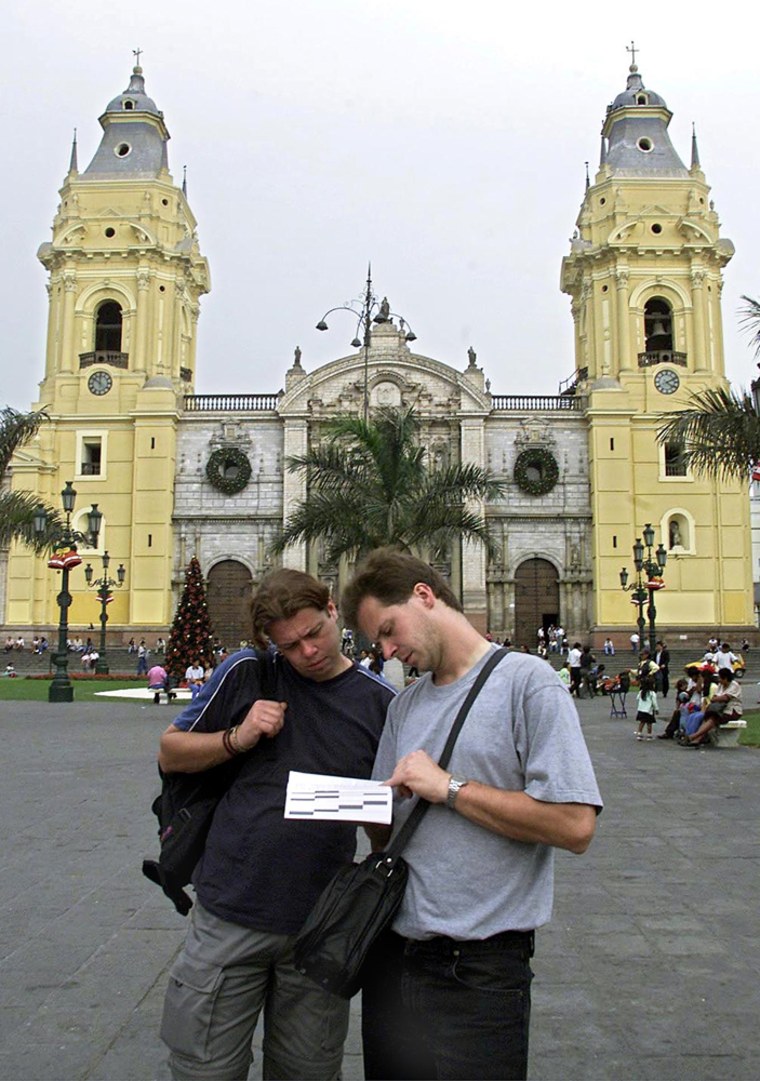Mention Peru to most travelers and the words Machu Picchu will come shooting back. This storied mountaintop site, the famed “lost city of the Incas,” is all majesty and mystery and is rightly at the center of Peru’s tourism industry (though many fear that its very popularity may destroy it). To get to Machu Picchu, most travelers spend a day in and around the capital, Lima. If that’s your plan, here are our suggestions on how to make the most of your stopover.
8 a.m. - 9 a.m.: Pop in to the for something bready, a cup of good strong coffee and, if you’re game this early in the morning, a handful of scrumptious house-made chocolates.
9 a.m. - noon: If you’re going on to Machu Picchu, your best prep for the experience will be a tour of the . Weaving together artifacts, art works, architectural models and superb wall text (in English and Spanish), it tells the tale of Peru’s ancient history in gripping detail. You’ll leave with newfound respect for the Incas, and their complex, sophisticated civilization.
Morning alternative
Pre-Incan culture is on view at , a site about 45 minutes from Lima that holds the remains of the coast’s most important ceremonial city. You’ll see ancient pyramidal temples (some of which have been rebuilt by the Peruvian government), plus the ruins of palaces, town squares and other structures. A major religious pilgrimage site for the Huari people, archeologists believe it was first settled in the first century A.D, but reached its peak of importance in the 10th century. The Incas conquered the city in the 15th century, and used it as one of their capitals until the Spanish conquistadors conquered them.
Noon to 2 p.m.: Slurp down ceviche (a specialty here and in Lima); sea urchin; calamari in prawn and cheese sauce; or sea bass stuffed with langoustines at locals’ fave . An unpretentious seafood shack owned by an Argentinean ex-pat and futbol fanatic (what décor there is, is devoted to that sport), it’s a sometimes rowdy, always friendly, spot to dine.
2 p.m. to 5 p.m.: Go see the kinky pots. The Moche people, who flourished in Peru between 200 A.D. and 700 A.D., were renowned for their erotic ceramics, today on display at . Along with the giant phalluses and explicit representations of sex, are exquisite textiles, jewelry, and stonework from a number of other pre-Columbian cultures. The museum is regarded as one of the most important of its kind anywhere.
Afternoon alternative
Head to the beach, but don’t get in the water (polluted, unfortunately). Work on your tan instead, and enjoy the show along the waves as local surfers hang diez.
6 p.m. to 9 p.m.: Pyramid views await at the elegant . Set in the heart of an archeological compound, you dine in front of 200 A.D. to 700 A.D. ruins (ask for seating on the shaded terrace). And the food is noteworthy, too. Prepared by Cordon Blue Paris graduate Marilú Madueño, it’s traditional Peruvian, but glamorized with an Asian ingredient here, or a French technique there.
9 p.m. - on … Experience a peña, basically a live criolla music, dance and/or folklore session, where the pros perform, but the locals frequently join in. It’s quite the party. Check out the schedules at , Caballero de Fina Estampa or .
Pauline Frommer is the creator of the new guides in bookstores now. Her book, Pauline Frommer's New York, was named Best Guidebook of the Year by the North American Travel Journalists Association.
Cocolat Café, Pasaje Nicolás de Ribera El Viejo (Los Escribanos) 121, phone 01/427-4471.
Museo de la Nación, Av. Javier Prado Este 2465 in San Borja, phone 01/476-9878. Open Tuesdays through Sundays 9am to 6pm . Admission is about $2 for adults, $1 for seniors.
To get to Pachacámac independently, hop a combis (with signs reading PACHACAMAC/LURIN) from Avenida Abancay and the corner of Ayacucho and Montevideo in Lima Centro. Or join a guided tour with Lima Tours, phone 01/424-5110; www.limatours.com.pe/
Canta Rana, Génova 101 in the Barranco area, phone 01/477-8934.
Museo Arqueológico Rafael Larco Herrera, Av. Bolívar 1515 in Pueblo Libre, phone 01/461-1312; http://museolarco.perucultural.org.pe. Open daily 9am-6pm. Admission is about $7 for adults, $3.50 for students.
Restaurant Huaca Pucllana, Av. Arequipa 4698 in Miraflores, phone 01/242-7978
Manos Morenas, Pedro de Osma 409, phone 01/467-0421.
Caballero de Fina Estampa, Av. del Ejército 800, phone 01/441-0552
Brisas del Titicaca, Jr. Walkulski 168, the first block of Av. Brasil, near Plaza Bolognesi, phone 01/332-1901.
